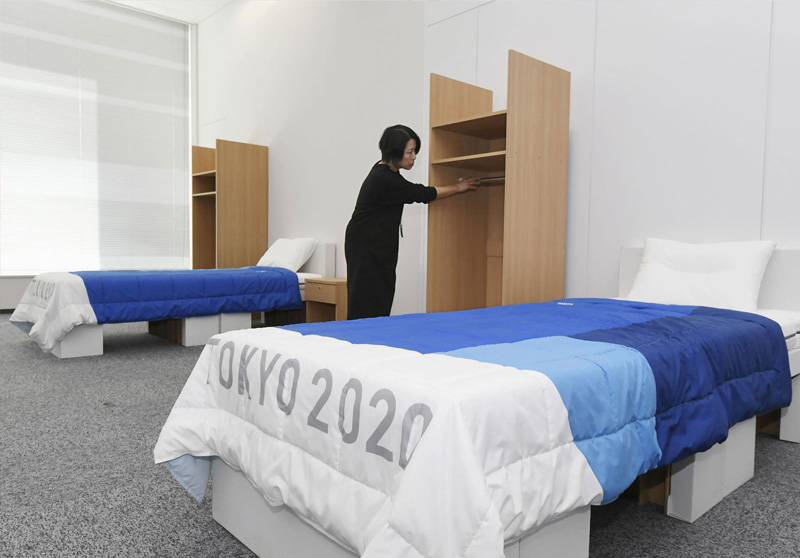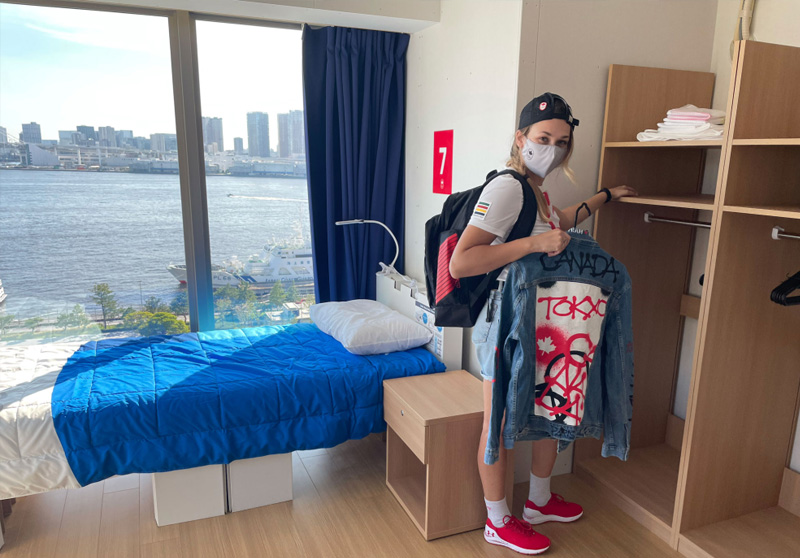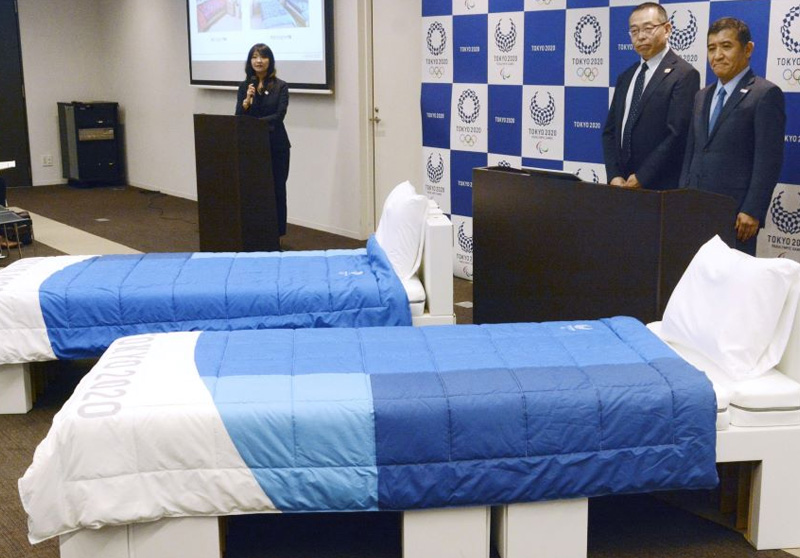Tokyo 2020 uses cardboard paper beds for athletes
Tokyo 2020 uses cardboard paper beds for athletes
In the upcoming Olympic and Paralympic Games in Tokyo this year, athletes will get some rest on cardboard paper beds with cushioned mattresses made from polyethylene that will be reused after the Olympics.
These environmentally friendly sleeping beds were initially put on display for the media on Thursday. They were placed at a mock apartment in the Tokyo 2020 headquarters regardless of the fact that the construction of residential areas had been already accomplished last year.

Other sections are still under construction like the main dining hall and the village plaza.
In total, 18,000 beds are required for the village within Tokyo Bay and within sight of the iconic Rainbow Bridge during the major event. 8,000 beds are needed for the Paralympics.
The beds' size is suitable for even the athletes with huge figures. At 2.10 meters long, these paper beds are more than enough for the tallest basketball players. Besides, these beds can stand up to 200 kg, which is sturdy enough for all athletes at the previous Games in Brazil (2016).

These makeshift beds will be sold privately after the event at a price slightly over ($665,800).
As stated by an environmental researcher on the city's task force, the Games organizers are making a strong effort to cut down on carbon emissions generated during the Games.
Interesting as it sounds, all medals are made from metal extracted from more than 6 million used electronic devices (mobile phones, tablets, etc.)

The body of the Olympics torch is made from aluminum waste and marine plastic waste.
Also, electricity here comes from inexhaustible resources.
Though the Olympics is postponed because the pandemic shows no sign of slowing down, this interesting idea from the Games’ organizers is highly appreciated by nature lovers across the world.
These environmentally friendly sleeping beds were initially put on display for the media on Thursday. They were placed at a mock apartment in the Tokyo 2020 headquarters regardless of the fact that the construction of residential areas had been already accomplished last year.

Other sections are still under construction like the main dining hall and the village plaza.
In total, 18,000 beds are required for the village within Tokyo Bay and within sight of the iconic Rainbow Bridge during the major event. 8,000 beds are needed for the Paralympics.
The beds' size is suitable for even the athletes with huge figures. At 2.10 meters long, these paper beds are more than enough for the tallest basketball players. Besides, these beds can stand up to 200 kg, which is sturdy enough for all athletes at the previous Games in Brazil (2016).

These makeshift beds will be sold privately after the event at a price slightly over ($665,800).
As stated by an environmental researcher on the city's task force, the Games organizers are making a strong effort to cut down on carbon emissions generated during the Games.
Interesting as it sounds, all medals are made from metal extracted from more than 6 million used electronic devices (mobile phones, tablets, etc.)

The body of the Olympics torch is made from aluminum waste and marine plastic waste.
Also, electricity here comes from inexhaustible resources.
Though the Olympics is postponed because the pandemic shows no sign of slowing down, this interesting idea from the Games’ organizers is highly appreciated by nature lovers across the world.

